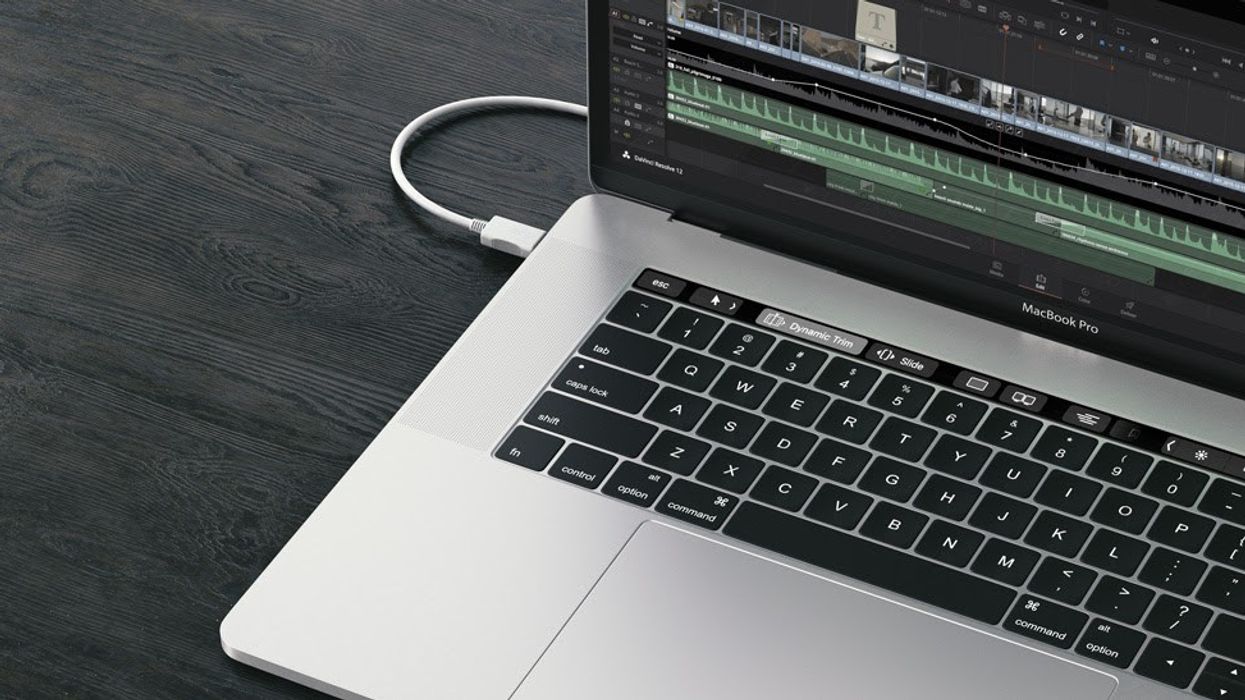Resolve 12.5.4 Gives Touch Bar Color Control
Mentioned on stage by Apple at the Macbook Pro release event over a month ago, Touch Bar support from Resolve is now here.

Colorists love a dedicated interface, with color control surfaces being a standard of color grading since the 1980s, so it's no surprise that Resolve would be a launch app for the Touch Bar and one of the first to implement it so thoroughly. With Resolve 12.5.4, Blackmagic has added some serious functionality to the Touch Bar that should speed up workflows for both editors and colorists. The implementation of the Touch Bar is context aware, meaning as you switch between the media, edit and color rooms you get different options on the Touch Bar automatically.

Hands down the most anticipated new feature is multi-touch control. While the vast majority of color commands can be accomplished with a mouse and keyboard, sometimes that involves a lot of back and forth. For instance, if you want to raise your midtones a bit, but keep your shadows where they are, you go back and forth, lifting the gamma and pushing down the gain, which is a slow process. Hardware interfaces like the Resolve Panels or a Tangent Ripple make it easy; you just gently spin the knobs at the same time. Simultaneous control is one of the main drivers of color control surface sales, since it not only saves time, it saves the client constantly saying "wait, that's too bright" after you lift the gamma but before you've had a chance to bring the gain down to compensate.
Multi-touch is what the Touch Bar was made for, and this release gives us a hint of what it can do, though it feels like the promise isn't quite fulfilled yet.
Multi-touch is what the Touch Bar was made for, and this release gives us a hint of what it can do, though it feels like the promise isn't quite fulfilled yet. For making quick and dirty tweaks in the field, it could be an amazing feature, but currently it is only enabled for one function at a time. You have to touch through three "clicks" to switch between shadows and midtones, which isn't any faster than mousing over between the sliders, and it still leaves that lag time when your mids are lifted and you haven't brought your shadows back down. Even more frustratingly, the Touch Bar doesn't keep its reference point, though this is likely more to do with the design of the bar than with Blackmagic's implementation of it. This means that, if you touch the bar in true middle, then drag the slider all the way to the right (brightening it, say, 10 points), then drag it back to exactly where your finger was before in the middle of the slider, it might only bring it back 6 points, not the full 10. This only seems to be the case if you drag outside the "picture" area, but it was very frustrating in testing since it made the slider feel slightly "unpredictable."

One workaround is to use the Touch Bar slider to control one element while using your mouse keypad to control another, and that did give a successful "multi-touch" feel in a way that wasn't possible before. However, in tests it felt slightly awkward, since your hands aren't side by side and because the speeds don't quite match, with a smaller movement on the touchpad having a bigger impact on the image than on the Touch Bar. But it did work, and the image changed dynamically in realtime with little lag even with both parameters changing at once. When changing a single parameter, such as the frequently used midtone detail, the touchbar give excellent, fine-grained control and made subtle changes much easier to control than the mouse.
The dream scenario would be three sliders, side by side, for controlling lift, gamma, and gain all at once, but that might be beyond what the first generation of Touch Bar is capable of handling. For now, most users will still find that they need to invest in something like the $350 Tangent Ripple, but the Touch Bar will speed up some operations in the field.
Touch Bar isn't the only upgrade in 12.5.4, as DaVinici continues their 30-year-long support for HDR imagery with extended Rec. 2100 and 2020 integration. Rec. 2100 is a superset of Rec. 2020 that covers the two approved HDR formats, SMPTE ST. 2084 (PQ) and Hybrid Log-Gamma (HLG). Resolve has been helping users navigate wide latitude imagery on narrower latitude monitors since they launched in the 1980s, developing tech to ensure that your film scans look phenomenal even on highly contrasty standard definition CRTs, and you see the fruit that of experience here. If you are using ACES workflows, you'll have the option of new P3-D65 IDTs and ODTs, and a new Rec. 2020 ST. 2084 1000nit ODT that uses P3 color space.

DaVinci Resolve 12.5.4 update is available now for both DaVinci Resolve and DaVinci Resolve Studio customers, and can be downloaded free of charge from the Blackmagic Design website. If you are an App Store Studio customer (5 installs for $500 through the Mac App Store), you'll need to download it there.
Tech Specs
- Added support for the MacBook Pro Touch Bar
- Added support for decoding MP3 files on Windows
- Added support for preserving super-white and sub-black data with ProRes 4444 codecs
- Added support for Grass Valley HQ and HQX codecs on Mac, Windows and Linux
- Added support for Rec. 2100 in DaVinci Resolve color management
- Added new sliders to control Dolby Vision analysis data
- Added P3-D65 IDTs and ODTs in ACES
- Added Rec.2020 ST.2084 1000 nits ODT clamped to P3 in ACES
- Added support for image orientation flag in DPX files
- Improved support for .CR2 files from Canon 5D Mark IV
- Improved grading and playback performance when working with large node graphs











